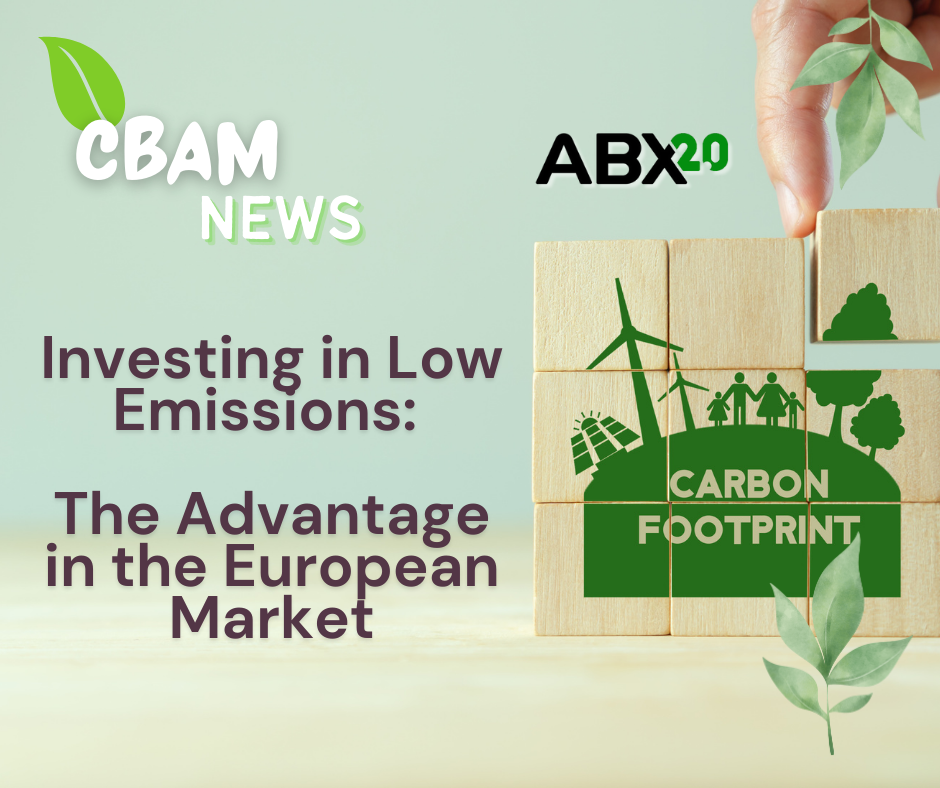The European Union (EU) continues to assert its leadership in the fight against climate change by introducing innovative mechanisms aimed at reducing carbon emissions. One of the most relevant tools is the Carbon Border Adjustment Mechanism (CBAM), which aims to tax the carbon emissions linked to imports into the EU. As we approach 2026, when this system will be fully operational, it is essential to understand the significant impact it will have on global markets and industries exporting to Europe.
What is CBAM and how does it work?
CBAM is primarily designed to prevent “carbon leakage”—a situation where European industries move production outside the EU to avoid strict emission regulations. This mechanism imposes taxes on imported goods based on their embedded carbon emissions. Starting in 2026, importers will have to pay taxes calculated through a formula that includes the embedded emissions of the products and a benchmark set by the EU. Essentially, products with higher emissions will face higher taxes, while low-emission products will gain a competitive edge.
Initially, it was expected that the system would be introduced gradually, with taxes applied to only 2.5% of embedded emissions by 2026. However, a major shift has been announced: the taxable percentage could reach 60% of embedded emissions in the first year of implementation, representing a substantial increase from earlier expectations. This decision is supported by a new benchmarking system, similar to the free allocation structure under the EU Emissions Trading System (EU ETS).
Impact on industries
The metallurgical industry, including products like steel pipes, is one of the sectors that will be heavily impacted by CBAM. These products, which have high embedded emissions, will face significant cost increases as CBAM taxes come into effect. For example, a product with 2.5 tons of CO2 emissions in 2026 could see approximately 64% of those emissions taxed, leading to a considerable rise in the final price.
Beyond price increases, CBAM will create a strong incentive for companies to produce low-carbon products. These will become more competitive in the European market, offering clear advantages to those investing in green technologies and reducing their carbon footprint. In this sense, CBAM is not just a taxation mechanism but also an opportunity for industries looking to align with sustainability goals.
The role of benchmarking
The CBAM benchmarking system is designed to encourage ecological performance from both EU and non-EU producers. Benchmarks represent the average emissions of the least polluting 10% of producers in a given sector. As a result, imported products that exceed this benchmark will face higher financial costs, while those that fall within these limits will be less affected by taxes.
This benchmarking system will be introduced alongside the gradual phase-out of free allocations under the EU ETS, further strengthening the transition to a green economy. While EU producers previously received free allowances for part of their emissions, these benefits will be reduced over time, giving way to a tax system based on the entire carbon footprint of a product.
2026—The turning point
As 2026 approaches, it is increasingly clear that CBAM will reshape the competitive landscape for industries exporting to the EU. Sectors such as metallurgy and aluminum will need to rethink their strategies to cope with the new economic challenges. Reducing emissions is no longer just an environmental obligation but is becoming a key factor in market success.
In a world where pressures for the green transition are intensifying, CBAM provides a clear and strong framework to ensure fair competition between European and international producers. Those who act quickly to reduce emissions will gain a considerable advantage, while those lagging behind will face rising costs and significant economic challenges.
CBAM represents not just a tax, but a fundamental shift in how carbon emissions are managed globally. The impact of this mechanism will be felt across all industries dependent on exports to the EU, and preparing for these changes is essential to remain competitive in the new economic environment.
Sources and further information:
- European Commission: Q&A on Carbon Border Adjustment Mechanism
- EU: Implementing Regulation on reporting obligations
- EU: Regulation establishing a carbon border adjustment mechanism
- Trishant Dev and Avantika Goswami 2024. Carbon Border Adjustment Mechanism (CBAM): The Global South’s response to a changing trade regime in the era of climate change, Centre for Science and Environment, New Delhi

